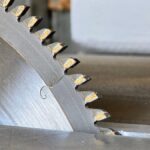Fertilizer is a crucial nutrient boost for crops, acting like a multivitamin that helps plants reach their full potential. By supplying essential elements like nitrogen, phosphorus, and potassium, fertilizers enhance plant growth, improve root development, and strengthen the ability to resist pests and diseases. To help your plants thrive and to choose the right technique for your farm’s needs, let’s take a look at the different ways to effectively spread fertilizer.
Broadcast Spreaders
Broadcast spreaders are some of the most popular tools for distributing fertilizer evenly across a large area. They work by scattering granules or pellets over the soil surface with rotating discs, allowing for quick and efficient coverage.
When using a broadcast spreader, it’s important to calibrate the equipment properly to ensure the correct rate of fertilizer application. This involves setting the spreader’s gauge to match the recommended rate on the fertilizer bag. Additionally, slightly overlapping passes will help prevent streaking, ensuring even distribution of nutrients.
Drop Spreaders
Drop spreaders offer a precise method for distributing fertilizer, making them an excellent choice for smaller areas or where border control is essential, such as along the edge of a field. Unlike broadcast spreaders, drop spreaders release fertilizer directly beneath the unit, minimizing drift onto unintended areas.
This precision accurately deposits every granule, which is particularly useful when working with a limited supply of fertilizer. With this method, it’s essential to walk at a consistent pace and maintain straight, overlapping paths to avoid missing spots.
Drone Spreading
While many people think of agricultural drones as mainly for spraying pesticides, one of the many interesting facts about sprayer drones is that they can also distribute fertilizers. These unmanned aerial vehicles (UAVs) offer precise application, especially in areas that are hard to reach with traditional equipment.
By using GPS and sensors, drones can map fields and apply fertilizer with pinpoint accuracy, ensuring optimized conditions for plant growth while minimizing waste and environmental impact. Additionally, drones can cover large areas quickly, reducing the time and labor usually involved in manual spreading.
Fertigation Method
The fertigation method combines the application of water and fertilizers, leveraging an irrigation system to deliver nutrients directly to the plants’ root zones. This approach is particularly effective in optimizing nutrient uptake since it provides a steady supply of essential nutrients with precise control over the application rates. Farmers typically use this method for greenhouse and open-field crops.
Foliar Feeding
If you’re looking for an easy way to effectively spread fertilizer that will allow plants to quickly absorb nutrients, foliar feeding should be your go-to choice. This method allows plants to absorb nutrients directly through their foliage and is particularly advantageous when quick nutrient correction is necessary.
This is because it bypasses the soil and delivers essential nutrients directly to where they are needed most. Ideal for supplying micronutrients like zinc, manganese, and copper, foliar feeding can help address specific deficiencies and promote healthier, more robust plant growth.
Embrace these versatile approaches to fertilizer application and watch your crops flourish!










 Deering Estate
Deering Estate
 Massage Envy South Miami
Massage Envy South Miami
 Calla Blow Dry
Calla Blow Dry
 My Derma Clinic
My Derma Clinic
 Sushi Maki
Sushi Maki
 Sports Grill
Sports Grill
 The Healthy Kitchen
The Healthy Kitchen
 Golden Rule Seafood
Golden Rule Seafood
 Malanga Cuban Café
Malanga Cuban Café

 Kathleen Ballard
Kathleen Ballard
 Panter, Panter & Sampedro
Panter, Panter & Sampedro
 Vintage Liquors
Vintage Liquors
 The Dog from Ipanema
The Dog from Ipanema
 Rubinstein Family Chiropractic
Rubinstein Family Chiropractic
 Your Pet’s Best
Your Pet’s Best
 Indigo Republic
Indigo Republic




 ATR Luxury Homes
ATR Luxury Homes


 2112 Design Studio
2112 Design Studio
 Hamilton Fox & Company
Hamilton Fox & Company
 Creative Design Services
Creative Design Services
 Best Pest Professionals
Best Pest Professionals
 HD Tree Services
HD Tree Services
 Trinity Air Conditioning Company
Trinity Air Conditioning Company
 Cisca Construction & Development
Cisca Construction & Development
 Mosquito Joe
Mosquito Joe
 Cutler Bay Solar Solutions
Cutler Bay Solar Solutions


 Miami Royal Ballet & Dance
Miami Royal Ballet & Dance
 Christopher Columbus
Christopher Columbus
 Pineview Preschools
Pineview Preschools
 Westminster
Westminster
 Carrollton
Carrollton
 Lil’ Jungle
Lil’ Jungle
 Frost Science Museum
Frost Science Museum
 Palmer Trinity School
Palmer Trinity School
 South Florida Music
South Florida Music
 Pinecrest Orthodontics
Pinecrest Orthodontics
 Dr. Bob Pediatric Dentist
Dr. Bob Pediatric Dentist
 d.pediatrics
d.pediatrics
 South Miami Women’s Health
South Miami Women’s Health

 The Spot Barbershop
The Spot Barbershop
 My Derma Clinic
My Derma Clinic




 Miami Dance Project
Miami Dance Project

 Rubinstein Family Chiropractic
Rubinstein Family Chiropractic
 Indigo Republic
Indigo Republic

 Safes Universe
Safes Universe
 Vintage Liquors
Vintage Liquors
 Evenings Delight
Evenings Delight





 Atchana’s Homegrown Thai
Atchana’s Homegrown Thai
 Baptist Health South Florida
Baptist Health South Florida

 Laser Eye Center of Miami
Laser Eye Center of Miami
 Visiting Angels
Visiting Angels
 OpusCare of South Florida
OpusCare of South Florida

 Your Pet’s Best
Your Pet’s Best





 HD Tree Services
HD Tree Services
 Hamilton Fox & Company
Hamilton Fox & Company


 Creative Design Services
Creative Design Services